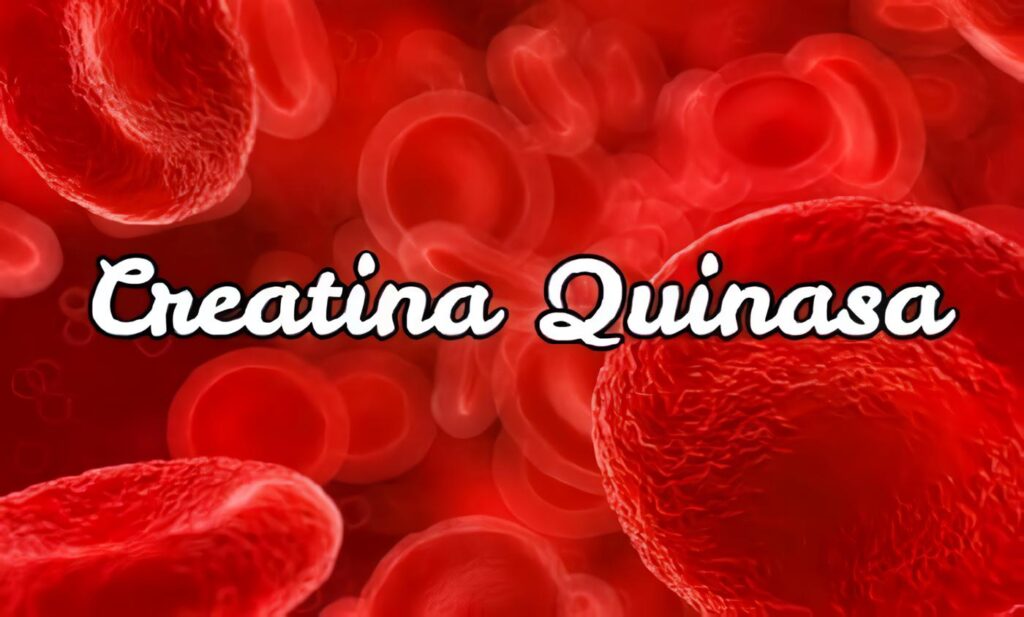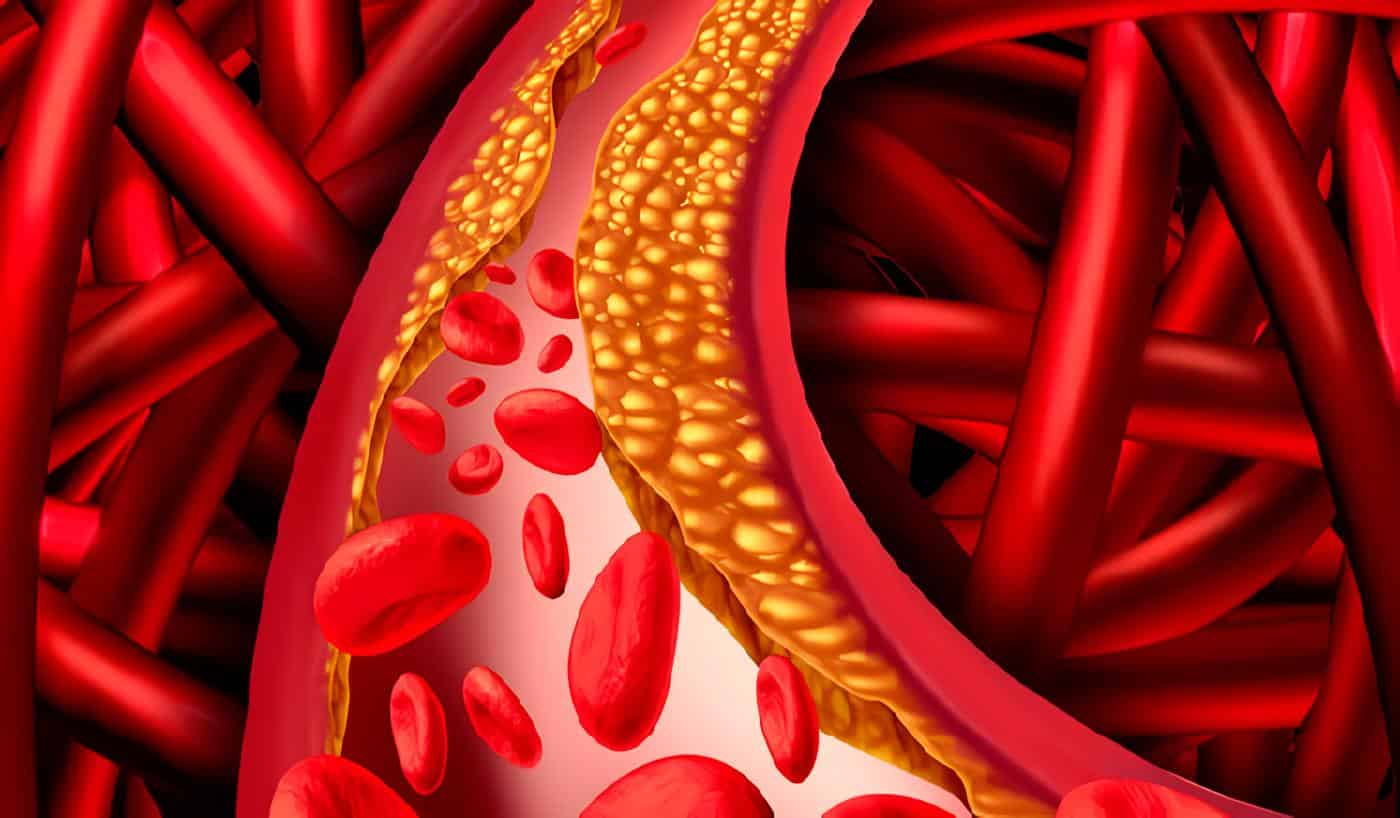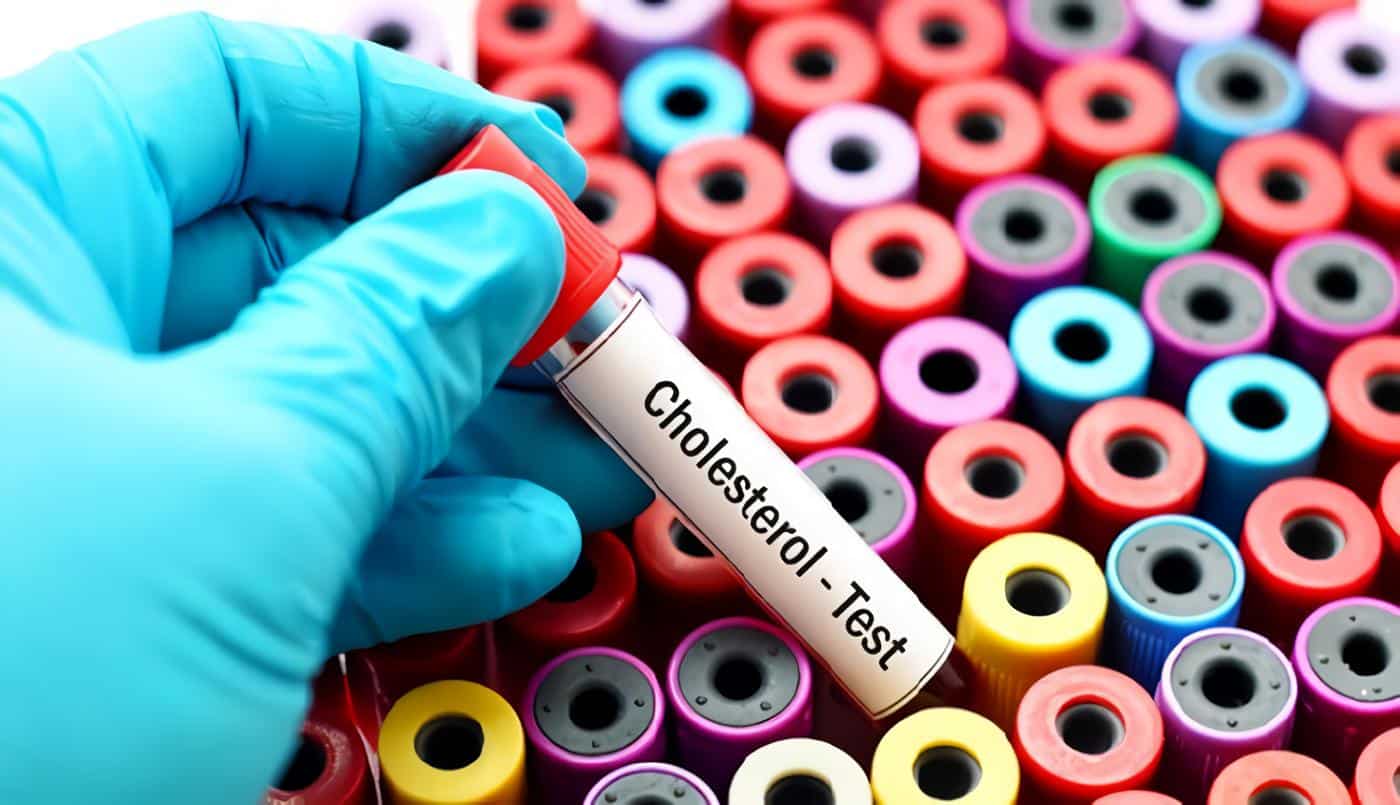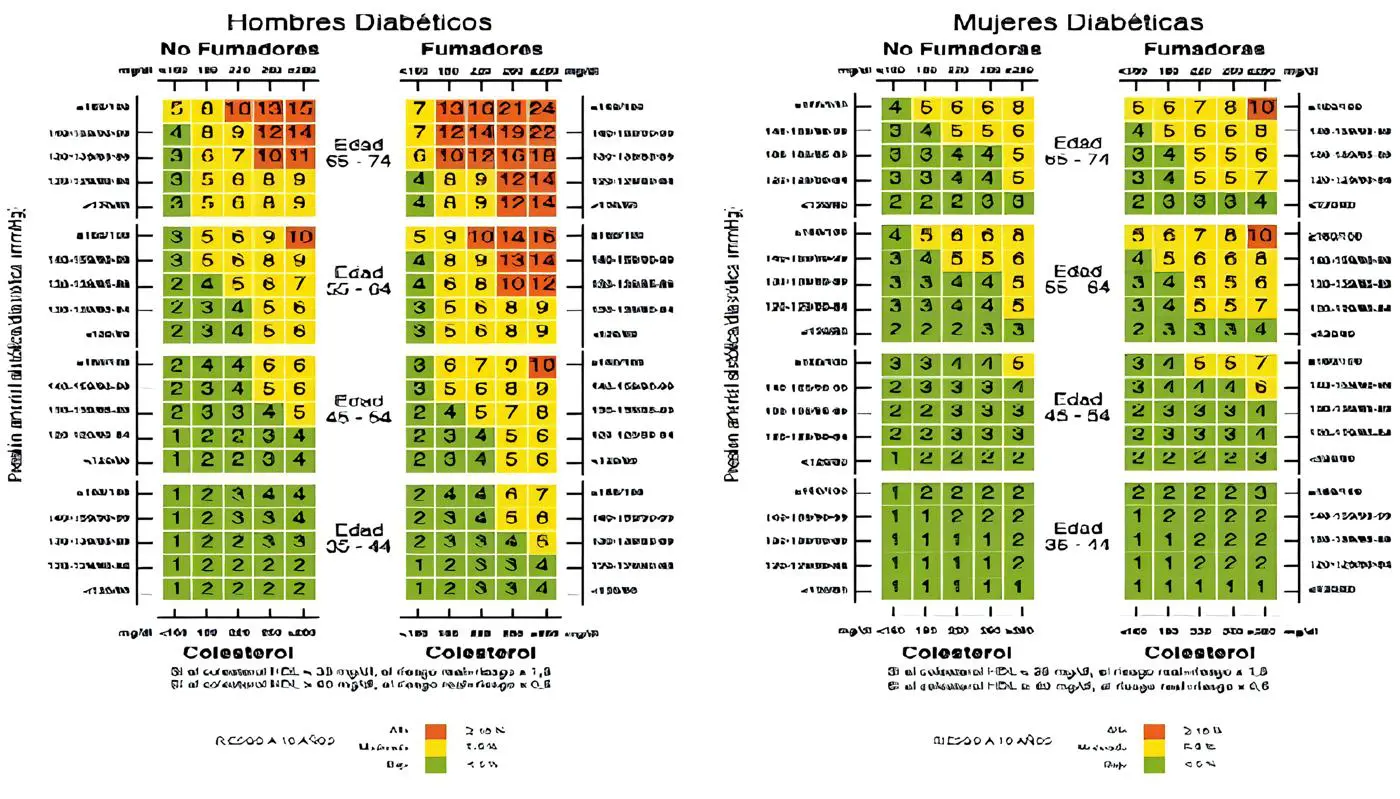Pregunta clínica 14
En la población adulta con dislipidemia en tratamiento farmacológico, ¿cuál es la estrategia más adecuada para detectar efectos adversos (elevación de la creatina quinasa —CK— y de las aminotransferasas), y cada cuánto debe realizarse?
Respuesta a la pregunta
Los efectos secundarios musculares severos como la rabdomiólisis están asociados al uso de estatinas, pero son muy raros (66). Los efectos más leves, como la miositis o las mialgias, también asociados al uso de estatinas como monoterapia (67), son significativamente más comunes cuando se usan estatinas en esquema intensivo, al compararlos con esquema moderado (68). A pesar de ello, los potenciales beneficios de la terapia con estatinas en esquema intensivo superan los riesgos en los pacientes de alto riesgo.
Hay diferencias estadísticamente significativas en la incidencia de la elevación de los niveles de AST y ALT, tanto al comparar estatinas contra placebo (66) como al comparar estatinas en esquema intensivo frente a moderado (68). Sin embargo, se discutió dentro del grupo que la implicación clínica de estos hallazgos no se conoce.
No hay datos suficientes que permitan evaluar adecuadamente el impacto de la terapia combinada en la incidencia de efectos adversos (61). Sin embargo, tampoco es claro un beneficio clínico de dichas combinaciones, por lo cual no parece adecuado recomendar su uso; menos aún, tomando en cuenta el mayor costo de esta práctica.
Recomendaciones
1 En la población adulta con dislipidemia en tratamiento farmacológico se sugiere administrar estatinas en esquema moderado en quienes, teniendo indicación de estatinas en esquema intensivo, presenten las siguientes condiciones predisponentes a efectos adversos:
- Comorbilidades múltiples o serias, incluyendo alteración de la función hepática o de la renal.
- Historia de intolerancia previa a estatinas o enfermedades musculares.
- Elevaciones inexplicadas de AST o de ALT superiores a tres veces el límite superior de la normalidad.
- Uso concomitante de otros medicamentos que afecten el metabolismo de las estatinas (por ejemplo, fibratos).
- Tener más de 75 años de edad, según el balance riesgo-beneficio y las preferencias del paciente.
2 En pacientes con dislipidemia con indicación de tratamiento en esquema moderado que presenten condiciones predisponentes para desarrollar efectos adversos se sugiere discutir con ellos la relación riesgo-beneficio. Si se inicia el tratamiento, se debe hacer un seguimiento clínico estricto.
3 En la población adulta con dislipidemia con tratamiento farmacológico no se sugiere hacer mediciones rutinarias de los niveles de CK en personas que reciben terapia con estatinas.
4 En la población adulta con dislipidemia en tratamiento farmacológico se sugiere medir los niveles de CK en personas que presenten síntomas musculares durante la terapia con estatinas. Los síntomas incluyen mialgias, debilidad o fatiga generalizada.
5 En la población adulta con dislipidemia en tratamiento farmacológico se sugiere medir los niveles basales de CK en personas asintomáticas, pero que presenten alguna de las siguientes condiciones:
- Historia personal o familiar de intolerancia a las estatinas.
- Enfermedad muscular.
- Uso concomitante de medicamentos que alteren el metabolismo de las estatinas (por ejemplo, fibratos).
6 En la población adulta con dislipidemia en tratamiento farmacológico no se sugiere hacer mediciones rutinarias de AST y de ALT en todas las personas que van a iniciar manejo con estatinas.
7 En la población adulta con dislipidemia en tratamiento farmacológico se sugiere hacer mediciones de los niveles de ALT al inicio de la terapia si el paciente tiene alguna condición clínica como síndrome metabólico, historia de abuso del alcohol y de uso de medicamentos que alteren el metabolismo de las estatinas (por ejemplo, fibratos) o que sean hepatotóxicos.
8 En la población adulta con dislipidemia se sugiere hacer mediciones de los niveles de AST y de ALT si se presentan síntomas sugestivos de toxicidad hepática, tales como:
- Fatiga o debilidad inusuales.
- Pérdida del apetito.
- Dolor abdominal.
- Aparición de ictericia.
Punto de buena práctica clínica
- Es deseable que todo el personal de salud conozca el potencial de los efectos adversos de los medicamentos hipolipemiantes, y que dicho potencial se discuta con cada paciente.
En el anexo 2 se presentan los algoritmos sobre tamización, evaluación del riesgo cardiovascular, tratamiento, monitoreo y seguimiento en dislipidemias.
Referencias
- 1. Anderson TJ, Grégoire J, Hegele R a, Couture P, Mancini GBJ, McPherson R, et al. 2012 update of the Canadian Cardiovascular Society guidelines for the diagnosis and treatment of dyslipidemia for the prevention of cardiovascular disease in the adult. Can J Cardiol [Internet]. 2013 Feb [cited 2014 Jan 20];29(2):151–67. Available from: http://www.ncbi.nlm.nih.gov/pubmed/23351925
- 2. Dislipoproteinemias LAS, Adultos EN. revista colombiana de. 2005;
- 3. Eckel RH, Jakicic JM, Ard JD, Miller NH, Hubbard VS, Nonas CA, et al. 2013 AHA/ ACC Guideline on Lifestyle Management to Reduce Cardiovascular Risk. J Am Coll Cardiol [Internet]. 2013 Nov 7 [cited 2013 Nov 13]; Available from: http://www.ncbi.nlm.nih.gov/pubmed/24239922
- 4. Goff DC, Lloyd-Jones DM, Bennett G, O’Donnell CJ, Coady S, Robinson J, et al. 2013 ACC/AHA Guideline on the Assessment of Cardiovascular Risk: A Report of the American College of Cardiology/American Heart Association Task Force on Practice Guidelines. J Am Coll Cardiol [Internet]. 2013 Nov 12 [cited 2014 Feb 24]; Available from: http://www.ncbi.nlm.nih.gov/pubmed/24239921
- 5. Reiner Z, Catapano AL, De Backer G, Graham I, Taskinen M-R, Wiklund O, et al. ESC/EAS Guidelines for the management of dyslipidaemias: the Task Force for the management of dyslipidaemias of the European Society of Cardiology (ESC) and the European Atherosclerosis Society (EAS). Eur Heart J [Internet]. 2011 Jul [cited 2014 Jan 25];32(14):1769–818. Available from: http://www.ncbi.nlm.nih.gov/pubmed/21712404
- 6. Third Report of the National Cholesterol Education Program (NCEP) Expert Panel on Detection, Evaluation, and Treatment of High Blood Cholesterol in Adults (Adult Treatment Panel III) final report. Circulation [Internet]. 2002 Dec 17 [cited 2013 Sep 19];106(25):3143–421. Available from: http://www.ncbi.nlm.nih.gov/pubmed/12485966
- 7. Stone NJ, Robinson J, Lichtenstein AH, Bairey Merz CN, Lloyd-Jones DM, Blum CB, et al. 2013 ACC/AHA Guideline on the Treatment of Blood Cholesterol to Reduce Atherosclerotic Cardiovascular Risk in Adults: A Report of the American College of Cardiology/American Heart Association Task Force on Practice Guidelines. J Am Coll Cardiol [Internet]. 2013 Nov 7 [cited 2013 Dec 11]; Available from: http://www.ncbi.nlm.nih.gov/pubmed/24239923
- 8. Jensen MD, Ryan DH, Apovian CM, Loria CM, Ard JD, Millen BE, et al. 2013 AHA/ ACC/TOS Guideline for the Management of Overweight and Obesity in Adults: A Report of the American College of Cardiology/American Heart Association Task Force on Practice Guidelines and The Obesity Society. J Am Coll Cardiol [Internet]. 2013 Nov 7 [cited 2014 Jan 28]; Available from: http://www.ncbi.nlm.nih.gov/pubmed/24239920
- 9. World Health Organization. Prevention of Cardiovascular Disease. Guidelines for assessment and management of cardiovascular risk. 2007.
- 10. Organización Panamericana de la Salud, Ministerio de la Protección Social, Instituto Nacional de Salud. Indicadores Básicos 2010. Situación de Salud en Colombia.
- 11. Organización Panamericana de la Salud. Situación de salud en las américas. Indicadores básicos 2012.
- 12. U.S. Department of Health and Human Services (DHHS) (1996) National Center for Health Statistics. Public Use Data File Documentation Number 76200. Springfield VC for DC and P. Third National Health and Nutrition Examination Survey, 1988–1994, NHANES III Laboratory Data File.
- 13. Pearson TA, Laurora I, Chu H, Kafonek S. The lipid treatment assessment project (L-TAP): a multicenter survey to evaluate the percentages of dyslipidemic patients receiving lipid-lowering therapy and achieving low-density lipoprotein cholesterol goals. Arch Intern Med [Internet]. 2000 Feb 28 [cited 2014 Feb 28];160(4):459–67. Available from: http://www.ncbi.nlm.nih.gov/pubmed/10695686
- 14. M. Ciruzzi, V. Rudich, J. Rozlosnik, H. Cesar CD. Colesterol plasmático y riesgo de infarto agudo de miocardio. Rev Argent Cardiol. 1997;65(3):267–75.
- 15. Kelley GA, Kelley KS. Impact of progressive resistance training on lipids and lipoproteins in adults: a meta-analysis of randomized controlled trials. Prev Med (Baltim) [Internet]. 2009 Jan [cited 2013 Jul 25];48(1):9–19. Available from: http://dx.doi.org/10.1016/j.ypmed.2008.10.010
- 16. Kelley GA, Kelley KS, Roberts S, Haskell W. Comparison of aerobic exercise, diet or both on lipids and lipoproteins in adults: a meta-analysis of randomized controlled trials. Clin Nutr [Internet]. 2012 Apr [cited 2013 Jul 23];31(2):156–67. Available from: http://dx.doi.org/10.1016/j.clnu.2011.11.011
- 17. De Lorgeril M, Salen P, Martin J, Monjaud I, Delaye J, Mamelle N. Mediterranean diet, traditional risk factors, and the rate of cardiovascular complications after myocardial infarction : final report of the Lyon Diet Heart Study. Circulation [Internet]. 1999 Feb 16 [cited 2013 May 23];99(6):779–85. Available from: http://circ.ahajournals.org/cgi/doi/10.1161/01.CIR.99.6.779
- 18. Hooper L, Summerbell CD, Thompson R, Sills D, Roberts FG, Moore HJ, et al. Reduced or modified dietary fat for preventing cardiovascular disease. Cochrane Database Syst Rev [Internet]. 2012 Jan [cited 2013 May 22];(5):CD002137. Available from: http://www.ncbi.nlm.nih.gov/pubmed/22592684
- 19. Salehi-Abargouei A, Maghsoudi Z, Shirani F, Azadbakht L. Effects of dietary approaches to stop hypertension (DASH)-style diet on fatal or nonfatal cardiovascular diseases–incidence: a systematic review and meta-analysis on observational prospective studies. Nutrition [Internet]. Elsevier Inc.; 2013 Apr [cited 2013 May 28];29(4):611–8. Available from: http://www.ncbi.nlm.nih. gov/pubmed/23466047
- 20. Rees K, Dyakova M, Ward K, Thorogood M, Brunner E. Dietary advice for reducing cardiovascular risk. Cochrane Database Syst Rev. 2013;(3):CD002128.
- 21. Bell D a, Hooper AJ, Bender R, Edwards G, van Bockxmeer FM, Watts GF, et al. Screening for lipid disorders. Pathology [Internet]. 2001 Feb;44(2):115–21. Available from: http://www.ncbi.nlm.nih.gov/pubmed/22765033
- 22. Carson S. Screening for Lipid Disorders in Adults : Selective Update of 2001 U . S . Preventive Services Task Force Review. 2008;(49).
- 23. Grover SA, Coupal L, Hu XP. Identifying adults at increased risk of coronary disease. How well do the current cholesterol guidelines work? JAMA [Internet]. 1995 Sep 13 [cited 2013 Jul 25];274(10):801–6. Available from: http://www.ncbi.nlm.nih.gov/pubmed/7650803
- 24. Muñoz O, Ruiz A, Rodriguez N. Validación de los modelos de predicción de Framingham y PROCAM como estimadores de riesgo cardiovascular en una población Colombiana. Pontificia Universidad Javeriana; 2012. p. 1–32.
- 25. Conroy R. Estimation of ten-year risk of fatal cardiovascular disease in Europe: the SCORE project. Eur Heart J [Internet]. 2003 Jun [cited 2013 May 30];24(11):987–1003. Available from: http://eurheartj.oxfordjournals.org/cgi/doi/10.1016/S0195-668X(03)00114-3
- 26. Baigent C, Keech A, Kearney PM, Blackwell L, Buck G, Pollicino C, et al. Efficacy and safety of cholesterol-lowering treatment: prospective meta-analysis of data from 90,056 participants in 14 randomised trials of statins. Lancet [Internet]. 2005 Oct 8 [cited 2013 Sep 27];366(9493):1267–78. Available from: http:// www.ncbi.nlm.nih.gov/pubmed/16214597
- 27. Taylor F, Huffman MD, Macedo AF, Moore THM, Burke M, Davey Smith G, et al. Statins for the primary prevention of cardiovascular disease. Cochrane database Syst Rev [Internet]. 2013 Jan [cited 2013 Aug 12];1:CD004816. Available from: http://www.ncbi.nlm.nih.gov/pubmed/23440795
- 28. Tonelli M, Lloyd A, Clement F, Conly J, Husereau D, Hemmelgarn B, et al. Efficacy of statins for primary prevention in people at low cardiovascular risk: a meta-analysis. CMAJ [Internet]. 2011 Nov 8 [cited 2013 Aug 21];183(16):E1189–202. Available from: http://www.pubmedcentral.nih.gov/articlerender.fcgi?artid=3 216447&tool=pmcentrez&rendertype=abstract
- 29. Naci H, Brugts JJ, Fleurence R, Tsoi B, Toor H, Ades A. Comparative benefits of statins in the primary and secondary prevention of major coronary events and all-cause mortality: a network meta-analysis of placebo-controlled and active-comparator trials. Eur J Prev Cardiol [Internet]. 2013 Aug [cited 2013 Aug 30];20(4):641–57. Available from: http://www.ncbi.nlm.nih.gov/pubmed/23447425
- 30. Gutierrez J, Ramirez G, Rundek T, Sacco RL. Statin therapy in the prevention of recurrent cardiovascular events: a sex-based meta-analysis. Arch Intern Med [Internet]. 2012 Jun 25 [cited 2013 Aug 30];172(12):909–19. Available from: http://www.ncbi.nlm.nih.gov/pubmed/22732744
- 31. Afilalo J, Duque G, Steele R, Jukema JW, de Craen AJM, Eisenberg MJ. Statins for secondary prevention in elderly patients: a hierarchical bayesian meta-analysis. J Am Coll Cardiol [Internet]. 2008 Jan 1 [cited 2013 Aug 12];51(1):37–45. Available from: http://www.ncbi.nlm.nih.gov/pubmed/18174034
- 32. Mills EJ, Wu P, Chong G, Ghement I, Singh S, Akl E a, et al. Efficacy and safety of statin treatment for cardiovascular disease: a network meta-analysis of 170,255 patients from 76 randomized trials. QJM [Internet]. 2011 Feb [cited 2013 Aug 13];104(2):109–24. Available from: http://www.ncbi.nlm.nih.gov/pubmed/20934984
- 33. Manktelow BN, Potter JF. Interventions in the management of serum lipids for preventing stroke recurrence. Cochrane database Syst Rev [Internet]. 2009 Jan [cited 2013 Aug 30];(3):CD002091. Available from: http://www.ncbi.nlm.nih.gov/pubmed/19588332
- 34. Mills EJ, O’Regan C, Eyawo O, Wu P, Mills F, Berwanger O, et al. Intensive statin therapy compared with moderate dosing for prevention of cardiovascular events: a meta-analysis of >40 000 patients. Eur Heart J [Internet]. 2011 Jun [cited 2013 Aug 30];32(11):1409–15. Available from: http://www.ncbi.nlm. nih.gov/pubmed/21385791
- 35. Baigent C, Blackwell L, Emberson J, Holland LE, Reith C, Bhala N, et al. Efficacy and safety of more intensive lowering of LDL cholesterol: a meta-analysis of data from 170,000 participants in 26 randomised trials. Lancet [Internet]. Elsevier Ltd; 2010 Nov 13 [cited 2013 May 30];376(9753):1670–81. Available from: http://www.pubmedcentral.nih.gov/articlerender.fcgi?artid=2988224&tool =pmcentrez&rendertype=abstract
- 36. Naci H, Brugts J, Ades T. Comparative tolerability and harms of individual statins: a study-level network meta-analysis of 246 955 participants from 135 randomized, controlled trials. Circ Cardiovasc Qual Outcomes [Internet]. 2013 Jul 1 [cited 2013 Aug 6];6(4):390–9. Available from: http://www.ncbi.nlm.nih.gov/ pubmed/23838105
- 37. Colbert JD, Stone JA. Statin use and the risk of incident diabetes mellitus: a review of the literature. Can J Cardiol [Internet]. [cited 2013 Nov 7];28(5):581–9. Available from: http://www.ncbi.nlm.nih.gov/pubmed/22658337
- 38. Abourbih S, Filion KB, Joseph L, Schiffrin EL, Rinfret S, Poirier P, et al. Effect of fibrates on lipid profiles and cardiovascular outcomes: a systematic review. Am J Med [Internet]. 2009 Oct [cited 2013 Nov 22];122(10):962.e1–8. Available from: http://www.ncbi.nlm.nih.gov/pubmed/19698935
- 39. Jun M, Foote C, Lv J, Neal B, Patel A, Nicholls SJ, et al. Effects of fibrates on cardio-vascular outcomes: a systematic review and meta-analysis. Lancet [Internet]. 2010 May 29 [cited 2013 Nov 17];375(9729):1875–84. Available from: http:// www.ncbi.nlm.nih.gov/pubmed/20462635
- 40. Zhou Y-H, Ye X-F, Yu F-F, Zhang X, Qin Y-Y, Lu J, et al. Lipid management in the prevention of stroke: a meta-analysis of fibrates for stroke prevention. BMC Neurol [Internet]. 2013 Jan [cited 2013 Nov 22];13:1. Available from: http:// www.pubmedcentral.nih.gov/articlerender.fcgi?artid=3554504&tool=pmcen trez&rendertype=abstract
- 41. Sharma M, Ansari MT, Abou-Setta AM, Soares-Weiser K, Ooi TC, Sears M, et al. Systematic review: comparative effectiveness and harms of combination therapy and monotherapy for dyslipidemia. Ann Intern Med [Internet]. 2009 Nov 3 [cited 2013 Nov 22];151(9):622–30. Available from: http://www.ncbi.nlm. nih.gov/pubmed/19884623
- 42. Dunatchik AP, Ito MK, Dujovne C a. A systematic review on evidence of the effec-tiveness and safety of a wax-matrix niacin formulation. J Clin Lipidol [Internet]. Mosby, Inc; 2012 [cited 2013 Aug 28];6(2):121–31. Available from: http://www. ncbi.nlm.nih.gov/pubmed/22385545
- 43. Canner PL, Berge KG, Wenger NK et al. Fifteen year mortality in Coronary Drug Project patients: long-term benefit with niacin. J Am Coll Cardiol. 1986;8:1245– 55.
- 44. Brooks EL, Kuvin JT, Karas RH. Niacin’s role in the statin era. Expert Opin Phar-macother [Internet]. 2010 Oct;11(14):2291–300. Available from: http://www. ncbi.nlm.nih.gov/pubmed/20569085
- 45. Bruckert E, Labreuche J, Amarenco P. Meta-analysis of the effect of nicotinic acid alone or in combination on cardiovascular events and atherosclerosis. Atherosclerosis [Internet]. Elsevier Ireland Ltd; 2010 Jun [cited 2013 Aug 28];210(2):353–61. Available from: http://www.ncbi.nlm.nih.gov/pubmed/20079494
- 46. Charland SL, Malone DC. Prediction of cardiovascular event risk reduction from lipid changes associated with high potency dyslipidemia therapy. Curr Med Res Opin [Internet]. 2010 Feb [cited 2013 Aug 28];26(2):365–75. Available from: http://www.ncbi.nlm.nih.gov/pubmed/19995326
- 47. Lavigne PM, Karas RH. The current state of niacin in cardiovascular disease pre-vention: a systematic review and meta-regression. J Am Coll Cardiol [Internet]. Elsevier Inc.; 2013 Jan 29 [cited 2013 Aug 28];61(4):440–6. Available from: http://www.ncbi.nlm.nih.gov/pubmed/23265337
- 48. Duggal JK, Singh M, Attri N, Singh PP, Ahmed N, Pahwa S, et al. Effect of niacin therapy on cardiovascular outcomes in patients with coronary artery disease. J Cardiovasc Pharmacol Ther [Internet]. 2010 Jun [cited 2013 Sep 18];15(2):158– 66. Available from: http://www.ncbi.nlm.nih.gov/pubmed/20208032
- 49. Group HC. HPS2-THRIVE randomized placebo-controlled trial in 25 673 high-risk patients of ER niacin/laropiprant: trial design, pre-specified muscle and liver outcomes, and reasons for stopping study treatment. Eur Heart J [Internet]. 2013 May [cited 2013 Sep 18];34(17):1279–91. Available from: http://www. pubmedcentral.nih.gov/articlerender.fcgi?artid=3640201&tool=pmcentrez&r endertype=abstract
- 50. Saccilotto R, Kasenda B, Aj N, Briel M. Niacin for primary and secondary prevention of cardiovascular events ( Protocol ). 2012;(3).
- 51. Keenan JM, Wenz JB, Ripsin CM, Huang Z, McCaffrey DJ. A clinical trial of oat bran and niacin in the treatment of hyperlipidemia. J Fam Pract [Internet]. 1992 Mar [cited 2013 Sep 18];34(3):313–9. Available from: http://www.ncbi.nlm.nih.gov/ pubmed/1541958
- 52. Kühnast S, Louwe MC, Heemskerk MM, Pieterman EJ, van Klinken JB, van den Berg SAA, et al. Niacin Reduces Atherosclerosis Development in APOE*3Leiden. CETP Mice Mainly by Reducing NonHDL-Cholesterol. PLoS One [Internet]. 2013 Jan [cited 2013 Sep 19];8(6):e66467. Available from: http://www.pubmedcen-tral.nih.gov/articlerender.fcgi?artid=3686722&tool=pmcentrez&rendertype= abstract
- 53. Whitney EJ, Krasuski RA, Personius BE, Michalek JE, Maranian AM, Kolasa MW, et al. A randomized trial of a strategy for increasing high-density lipoprotein cholesterol levels: effects on progression of coronary heart disease and clinical events. Ann Intern Med [Internet]. 2005 Jan 18 [cited 2014 Jan 8];142(2):95– 104. Available from: http://www.ncbi.nlm.nih.gov/pubmed/15657157
- 54. Guyton JR, Brown BG, Fazio S, Polis A, Tomassini JE, Tershakovec AM. Lipid-altering efficacy and safety of ezetimibe/simvastatin coadministered with extended-release niacin in patients with type IIa or type IIb hyperlipidemia. J Am Coll Cardiol 2008;51:15 [Internet]. [cited 2013 Sep 19]. Available from: https:// www.google.com.co/#q=Guyton+JR,+Brown+BG,+Fazio+S,+Polis+A,+Tomassin i+JE,+Tershakovec+AM.+Lipid-altering+efficacy+and+safety+of+ezetimibe/sim vastatin+coadministered+with+extended-release+niacin+in+patients+with+ty pe+IIa+or+type+IIb+hyperlipidemia.+J+Am+Coll+Cardiol+2008;51:1564+–72.
- 55. Taylor AJ, Sullenberger LE, Lee HJ, Lee JK, Grace KA. Arterial Biology for the Investigation of the Treatment Effects of Reducing Cholesterol (ARBITER) 2: a double-blind, placebo-controlled study of extended-release niacin on atherosclerosis progression in secondary prevention patients treated with statins. Circulation [Internet]. 2004 Dec 7 [cited 2014 Feb 27];110(23):3512–7. Available from: http://www.ncbi.nlm.nih.gov/pubmed/15537681
- 56. Aronov MA, Keenan JM, Akhmedzhanov NM, Perova NV, Organov RY, Kiseleva NY. Clinical trial of wax-matrix sustainedrelease niacin in a russian population with hypercholesterolemia. Arch Fam Med. 1996;5:567–575. – Buscar con Google [Internet]. [cited 2013 Sep 20]. Available from: https://www.google. com.co/#q=Aronov+MA,+Keenan+JM,+Akhmedzhanov+NM,+Perova+NV,+O rganov+RY,+Kiseleva+NY.+Clinical+trial+of+wax-matrix+sustainedrelease+n iacin+in+a+russian+population+with+hypercholesterolemia.+Arch+Fam+M ed.+1996;5:567–575.
- 57. Rizos E, Ntzani E, Kostapanos MS. Association Between Omega-3 Fatty Acid. JAMA. 2013;308:1024–33
- 58. Roncaglioni MC, Tombesi M, Avanzini F, Barlera S, Caimi V, Longoni P, et al. N-3 Fatty Acids in Patients With Multiple Cardiovascular Risk Factors. N Engl J Med [Internet]. 2013 May 9 [cited 2013 Aug 6];368(19):1800–8. Available from: http://www.ncbi.nlm.nih.gov/pubmed/23656645
- 59. Hooper L, Harrison R, Summerbell C, Moore H, Worthington H. Omega 3 fatty acids for prevention and treatment of cardiovascular disease ( Review ). Cochrane Database Syst Rev. 2009;(4):1–193.
- 60. Kotwal S, Jun M, Sullivan D, Perkovic V, Neal B. Omega 3 Fatty acids and cardio-vascular outcomes: systematic review and meta-analysis. Circ Cardiovasc Qual Outcomes [Internet]. 2012 Nov [cited 2013 Aug 22];5(6):808–18. Available from: http://www.ncbi.nlm.nih.gov/pubmed/23110790
- 61. Sharma M, Ansari MT, Abou-setta AM, Soares-weiser K. Review Annals of Internal Medicine Systematic Review : Comparative Effectiveness and Harms of Combination Therapy and Monotherapy for Dyslipidemia. Ann Intern Med. 2009;151:622–30.
- 62. Insull W, Toth P, Mullican W, Hunninghake D, Burke S, Donovan JM, et al. Effecti-veness of colesevelam hydrochloride in decreasing LDL cholesterol in patients with primary hypercholesterolemia: a 24-week randomized controlled trial. Mayo Clin Proc [Internet]. 2001 Oct [cited 2014 Mar 17];76(10):971–82. Available from: http://www.ncbi.nlm.nih.gov/pubmed/11605698
- 63. Dorr AE, Gundersen K, Schneider JC, Spencer TW, Martin WB. Colestipol hy-drochloride in hypercholesterolemic patients–effect on serum cholesterol and mortality. J Chronic Dis [Internet]. 1978 Jan [cited 2014 Mar 17];31(1):5–14. Available from: http://www.ncbi.nlm.nih.gov/pubmed/346598
- 64. Scaldaferri F, Pizzoferrato M, Ponziani FR, Gasbarrini G, Gasbarrini A. Use and indications of cholestyramine and bile acid sequestrants. Intern Emerg Med. 2013 Apr;8(3):205–10.
- 65. Gupta A, Guyomard V, Zaman MJS, Rehman HU, Myint PK. Systematic review on evidence of the effectiveness of cholesterol-lowering drugs. Adv Ther. 2010 Jun;27(6):348–64.
- 66. Alberton M, Wu P, Druyts E, Briel M, Mills EJ. Adverse events associated with individual statin treatments for cardiovascular disease: an indirect comparison meta-analysis. QJM [Internet]. 2012 Feb [cited 2013 Aug 12];105(2):145–57. Available from: http://www.ncbi.nlm.nih.gov/pubmed/21920996
- 67. Parker BA, Capizzi JA, Grimaldi AS, Clarkson PM, Cole SM, Keadle J, et al. Effect of statins on skeletal muscle function. Circulation [Internet]. 2013 Jan 1 [cited 2013 Nov 7];127(1):96–103. Available from: http://www.ncbi.nlm.nih.gov/pubmed/23183941
- 68. Silva M, Matthews ML, Jarvis C, Nolan NM, Belliveau P, Malloy M, et al. Meta-analysis of drug-induced adverse events associated with intensive-dose statin therapy. Clin Ther [Internet]. 2007 Feb [cited 2013 Nov 25];29(2):253–60. Available from: http://www.ncbi.nlm.nih.gov/pubmed/17472818





